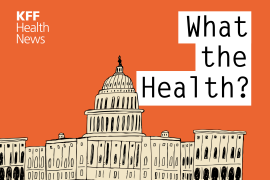MMWR Looks at High-Risk Behavior, New HIV Cases in Southern China
U.S. and Chinese researchers on Thursday reported on the impact of injection-drug use and high-risk heterosexual contact on HIV/AIDS in China's southern Guangdong province, Reuters reports (Fox, Reuters, 4/23).
The study, which appeared in CDC's MMWR, found that a total of 22,571 new cases of HIV were reported in Guangdong Province between 1997 and 2007, with males comprising 82.1% of the new cases, according to the CDC team, the Guangdong Center for Disease Control and colleagues (Wu et al., MMWR, 4/24).
The study also found that of males classified by HIV transmission category, 82.1% of HIV cases were attributed to injection-drug use compared to 53.7% of recently diagnosed women engaged in "high-risk heterosexual conduct."
The researchers note that while injection-drug use was the most commonly reported transmission category among newly diagnosed cases of HIV reported from 1997-2007, the number of cases attributed to high-risk heterosexual contact also increased.
Reuters writes that "the epidemic mirrors changes in China as a whole," where an estimated 700,000 people were living with HIV in 2007 and 70% of them were unaware of their status. In 1997, only 102 HIV cases were reported in Guangdong, however researchers believe the steep jump in newly reported cases is a reflection of improved HIV surveillance in the region (Reuters, 4/23).
An editorial note in the report says, "The recent increase in reported HIV cases attributed to high-risk heterosexual contact and the decline in cases attributed to injection-drug use might suggest a shift in Guangdong's HIV epidemic similar to the national trend, in which heterosexual transmission was the main transmission category in China in 2007" (MMWR, 4/23).
This is part of the Morning Briefing, a summary of health policy coverage from major news organizations. Sign up for an email subscription.





